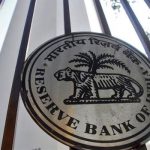take advantage of panic
How to profit from panic
An 11-year old boy bought 6 shares of Cities Service (an oil company now known as CITGO) at $38 per share. Soon after, the stock price began to fall and dipped to $27. When it finally recovered to $40, he exited the stock. The story does not end there. The stock price went up to $200 over the next 24 months. The young lad could not benefit from this rise. His impatience to get out of the stock too quickly turned out to be a costly lesson.
That was Warren Buffett’s first experience at stock picking. And one which taught him an invaluable principle – that patience is the cornerstone of value investing. Holding on to a stock when the market is punishing it may be painful, but worth it in the end.
(“Successful investing takes time, discipline and patience. No matter how great the talent or effort, some things just take time: You can’t produce a baby in one month by getting nine women pregnant”.)
Now the poster boy for value investing, his pronouncements electrify faithful adherents of the value philosophy. He once said that “most people get interested in stocks when everyone else is. The time to get interested is when no one else is. You can’t buy what is popular and do well.” He practiced this principle time and time again. An early investment which lucidly explains how he extracts value from companies which are out of favour is his bet on American Express.
In 1963, the company’s shares were clobbered due to its involvement with Allied Crude Vegetable Oil which was owned by small-time businessman Tino De Angelis. He would borrow money from a bank via a line of credit, buy shiploads of vegetable oil and store it in container ships, sell the oil and then pay back the line of credit. The oil in the tanks was inspected regularly and pledged as collateral for the line of credit. Amex provided credit to the company based upon the inventory of the company’s soybean-based salad oil. The inventory was kept on container ships thought to be full of salad oil. De Angelis ingeniously thought of a way to outsmart the banks. He would fill the containers with water and had only a few feet of salad oil on top. Since the oil floated on top of the water, it appeared to inspectors that these ships were loaded with oil. Meanwhile, De Angelis used this as collateral for taking more credit.
In Trade like Warren Buffett, James Altucher claims that De Angelis obtained $175 million in financing on the basis of $60 million worth of vegetable oil as collateral. He used the money to speculate on vegetable oil futures (where he eventually lost all the money). In 1963, the entire operation blew up when it was discovered that the company could not account for the absence of more than $175 million in salad oil.
When Amex did an audit to recover their collateral, they discovered that instead of $60 million worth of oil, there was just $6 million. A cruel reality check! This con job, dubbed as the “Salad Oil Scandal”, resulted in Amex losing nearly $58 million wiping out most of its equity base as its shares went into a free fall. Though Amex instantly made good on the hundreds of millions of dollars in potential liabilities, there were fears that the company would go bankrupt. Investors panicked.
Enter 33-year old Buffet.
- He was impressed by Amex’s instant response to the losses, taking the hit and indemnifying many of the third-party victims.
- He also saw that Amex’s competitive advantage and cash-flow generating capabilities were intact and believed that fears over the eventual liability were overblown.
- Most importantly, he recognised that this scandal had nothing to do with Amex’s core businesses – credit cards and travellers cheques, in which the company was a distinct market leader with excellent brand recognition. Before arriving at this conclusion, he spent an evening with the cashier at Ross’s Steak House in Omaha. He noted that the scandal did not stop people from using their green cards. Amex’s intangible qualities (trust and reliability) were intact.
Based on his inference that the Amex brand was still strong along with the underlying business, and the scandal was just a one-time hit against earnings, he began picking up Amex shares which had dropped from $60 to $35 over 60 days. As Wall Street bailed for the exits, he bet 40% of his investment partnership’s capital on Amex. According to Fortune, he bought 5% of the company for $13 million and reaped millions by way of profits.
(“Be fearful when others are greedy and greedy when others are fearful”).
Though he never vocalised it at that time, he believed in Amex’s moat, a term he often used after collaborating with Charlie Munger. When looking at companies, he looks for “economic castles protected by unbreachable moats”. The castle being a metaphor for a company, and the moat being a durable competitive advantage it possesses. Assessing that advantage involves understanding what kind of defense, or competitive barrier, the company has been able to build for itself in its industry, which could take various forms such as being a low-cost producer or owning a world-wide brand or in possession of a patent.
In the recent past, 2011 to be precise, this was once again evident in his massive purchase of IBM shares. In an interview with CNBC, he explained that IBM’s moat was the strength of its brand name and the stickiness of the customer relationship with the company. Buffett was of the opinion that IBM was less a pure tech company than a services company that helps IT departments do their job better. He went around to all his companies to see how their IT departments functioned and why they made the decisions they made. He came away convinced of the position that IBM holds within IT departments and why they hold it.
But it was more than that. Buffett confessed to reading the annual report of IBM every year for 50 years but was completely sold out on the latest (this was in 2011) which laid out a 5-year road map till 2015. He also held the financial policies of the management in high esteem and the way it contributed to shareholders wealth.
So what does Buffett look at when buying a stock?
(a) One that he understands
He stayed away from internet and dot-com companies because he did not think it possible to value a company that does not make money, has no competitive advantage and an uncertain future.
(b) High ROE
Return on equity, or ROE, is one of the more commonly used ratios for determining how well a company can use capital. Buffett likes companies with a high ROE while employing little or no debt. According to him, good business or investment decisions will eventually produce quite satisfactory economic results, with no aid from leverage.
(c) Favourable long-term prospects
Buffett ignores short-term swings in revenues and gravitates towards companies that have moats that allow it to earn high profits consistently.
In his 2007 letter to shareholders, he stated that a truly great business must have an enduring moat that protects excellent returns on invested capital. A barrier such as a company being a low-cost producer or possessing a powerful world-wide brand is essential for sustained success. Just as a moat around a medieval castle kept the castle safe from intruders, an economic moat around a company keeps the company safe from competitors and other profit-draining forces.
(d) Operated by honest and competent people
According to Buffett, it is hard to overemphasise the importance of who is CEO of a company. He looks for able and trustworthy management after all management’s capital allocation decisions can lead to the enhancement or erosion of an economic moat. “Over time, the skill with which a company’s managers allocate capital has an enormous impact on the enterprise’s value. “
(e) Available at a very attractive price
In his 1992 newsletter, he explained this parameter.
“We insist on a margin of safety in our purchase price. If we calculate the value of a common stock to be only slightly higher than its price, we’re not interested in buying. We believe this margin-of-safety principle, so strongly emphasized by Ben Graham, to be the cornerstone of investment success.”
In other words, margin of safety is the gap between price and value. “Price is what you pay, value is what you get.”
In terms of investor behaviour, there are 3 important lessons a value investor can learn from Buffett:
- Do not let the market make decisions for you.
“The market is there to serve you and not instruct you. It is not telling you whether you are right or wrong. The business results will determine that.” That is why Buffett picked Coca-Cola shares in 1988 even when many analysts thought the stock was over-valued. He believed he was buying Coke at a discount compared to a reasonable valuation of the company and its prospects. “Buy based on how businesses behave, not people.”
- Stay in for the long haul.
On a number of occasions Buffett has referred to himself as a “Rip Van Winkle” investor, an investor whose “favorite time frame for holding a stock is forever.”
A harmful temptation for individual investors is buying and selling too frequently. If you own high-quality assets, let the companies’ business strength and growth reward you through buybacks, dividends, purchases of other companies or internal growth. It is not necessary to constantly trade your holdings to have good investment success.
- Be patient.
“Only buy something that you’d be perfectly happy to hold if the market shut down for 10 years.”
In 1973, Buffett invested $10.6 million in the Washington Post Company. By the next year, his investment sank to a market value of around $8 million. But Buffett was unfazed. In his 1985 letter to shareholders, his calculations revealed that the investment was worth $221 million.
The lesson he learnt as an 11-year old served him well.




